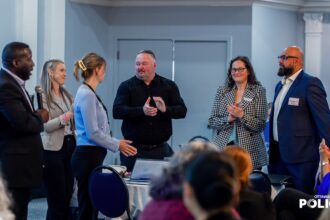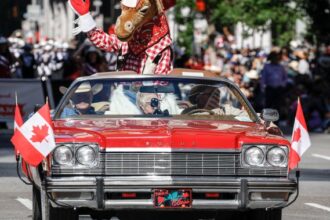In a transformative step toward reconciliation in healthcare, St. Michael’s Hospital unveiled its Indigenous Wellness Centre this week, establishing a culturally sensitive space designed to address the unique health needs of Toronto’s Indigenous communities. The centre, located in the heart of downtown, represents a significant milestone in the hospital’s commitment to equitable healthcare delivery for a population that has historically faced barriers within Canada’s medical system.
The new facility was made possible through a substantial donation from Laurie Honey Pawis, daughter of the late Honey and Barry Sherman, whose contribution underscores a growing recognition of the importance of Indigenous-led healthcare initiatives. “This centre embodies the spirit of healing that respects traditional knowledge while providing access to modern medical care,” Pawis explained during the emotional opening ceremony.
Indigenous patients at St. Michael’s have consistently reported feeling uncomfortable and sometimes unwelcome in conventional healthcare settings. The new centre directly addresses these concerns by incorporating Indigenous design elements, dedicated spaces for traditional healing practices, and staff trained in culturally appropriate care methods. Hospital administrators worked closely with Indigenous elders and community leaders throughout the planning process to ensure the space authentically reflects Indigenous values and traditions.
Dr. Andrew Petrosoniak, emergency physician and head of the hospital’s Indigenous health strategy, emphasized the importance of this approach: “We’re not simply providing a segregated space—we’re creating a healthcare environment that acknowledges the historical trauma experienced by Indigenous communities and actively works to rebuild trust through meaningful inclusion of traditional healing alongside conventional medicine.”
The wellness centre will offer a comprehensive range of services including primary care, mental health support, addiction counseling, and maternal health programs—all delivered through an Indigenous lens. Perhaps most significantly, traditional healers will work alongside medical doctors in a rare example of true healthcare integration that respects both knowledge systems equally.
“For too many years, Indigenous communities have been expected to adapt to healthcare systems that weren’t designed with their needs in mind,” noted Diane Hill, an Oneida knowledge keeper who participated in the centre’s development. “This space reverses that dynamic by bringing Indigenous perspectives to the forefront of care delivery.”
The timing of this initiative coincides with growing national awareness about the ongoing healthcare disparities faced by Indigenous peoples across Canada. Statistics consistently show Indigenous populations experience poorer health outcomes across numerous measures, including shorter life expectancies, higher rates of chronic disease, and limited access to culturally appropriate care.
Unity Health Toronto, which operates St. Michael’s Hospital, has committed to expanding similar programs across its network, signaling a systemic shift in how healthcare is delivered to diverse populations. Healthcare experts suggest this model could serve as a blueprint for other hospitals across Canada looking to improve their approach to Indigenous healthcare.
As patients begin accessing services at the new centre, the focus will be on measuring outcomes to demonstrate the effectiveness of culturally responsive care models. Early feedback from community members has been overwhelmingly positive, with many expressing hope that this represents a genuine turning point in the relationship between mainstream healthcare institutions and Indigenous peoples.
The question now facing Canada’s healthcare system is profound: Can this model of respectful integration between traditional Indigenous healing and Western medicine become the standard rather than the exception in how we approach equitable healthcare for all communities?










